 Fishermen have always had a love-hate relationship with roads, largely because their presence ensures high traffic, making the fast water home to drunken teenagers throwing rocks, and attracting refuse – beer cans and food containers discarded callously by persons unknown enroute to someplace better.
Fishermen have always had a love-hate relationship with roads, largely because their presence ensures high traffic, making the fast water home to drunken teenagers throwing rocks, and attracting refuse – beer cans and food containers discarded callously by persons unknown enroute to someplace better.
Firemen hate them as someone always builds a fire or flings a cigarette, ecologists despise them as wilderness has been tamed forever, and all of us are deafened by the hordes of ATV hellions that find these capillaries as quickly as they’re constructed.
As darkness falls, we’re often glad to see some even footing – especially after slogging against fast cold water all day, and a tailgate is a welcome surface to prepare a midday meal – but if you’re willing to walk a mile for a Camel, are you willing to walk two for a better hatch?
We’ve seen the pictures many times, tons of Hexagenia mayflies ovipositing in a Chevron station due to light pollution – a lethal combination of attraction to white light and mistaking the asphalt for water.
Recent studies suggest dark surfaces can polarize light better than water and can override the natural environment in favor of mass egg laying on dry land.
Polarized light pollution (PLP) caused by artificial planar surfaces has clear and deleterious impacts on the ability of
animals to judge safe and suitable habitats and oviposition
sites. In particular, PLP presents severe problems for
organisms associated with water bodies. Orientation to
horizontally polarized light sources is the primary guidance
mechanism used by at least 300 species of dragonflies,
mayflies, caddisflies, tabanid flies, diving beetles,
water bugs, and other aquatic insects. This is used to
search for suitable water bodies to act as feeding/breeding,
habitat, and oviposition sites (Schwind 1991; Horváth
and Kriska 2008). Because of their strong horizontal
polarization signature, artificial polarizing surfaces (eg
asphalt, gravestones, cars, plastic sheeting, pools of oil,
glass windows) are commonly mistaken for bodies of
water (Horváth and Zeil 1996; Kriska et al. 1998, 2006a,
2007, 2008a; Horváth et al. 2007, 2008). Because the p of
light reflected by these surfaces is often higher than that
of light reflected by water, artificial polarizers can be even
more attractive to positively polarotactic (ie lured to horizontally polarized light) aquatic insects than a water
body (Horváth and Zeil 1996; Horváth et al. 1998; Kriska
et al. 1998). They appear as exaggerated water surfaces,
and act as supernormal optical stimuli.
Thinking of buying a car? I’d consider a light colored model – especially if you’re planning on parking it near where you’re fishing, every bug that mistakes your hood for water is one less you can fish over.
As rural areas succumb to development, light pollution and polarization is becoming a larger issue – especially with insects that use dusk or full dark to oviposit.
No research describes the percentages of affected insects, but as a layman, can’t we draw the conclusion that those stretches of the river without buildings, cars, or roads have more bugs?
… this might be the scientific proof of our conventional axiom, “the farther we get away from the parking lot, the better the fishing..”
Those of you contemplating construction of your fishing “dream retreat” take note – cover your driveway with white quartz, and make sure the Jacuzzi cover is light canvas.
Brownliners have exploited this scientific “wrinkle” for years, we’re often asked why we’re trailing 400 yards of black VisQueen behind us – mostly we smile and keep walking, figuring you’ll assume the Port-a-Potty lacks toilet paper…

 I call it fishing but it’s mostly exercise. The misdeeds of late December have a habit of lingering until Spring, with every morsel of See’s candy, every indiscretion of fruit cake or Egg Nog – visible on my portly frame.
I call it fishing but it’s mostly exercise. The misdeeds of late December have a habit of lingering until Spring, with every morsel of See’s candy, every indiscretion of fruit cake or Egg Nog – visible on my portly frame.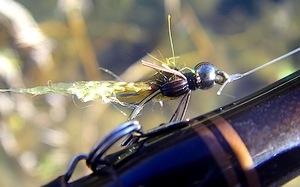 Three miles up and three back suggests I’m back to summer form, and for the entire journey, there was but six fish visible. The bass are nowhere to be seen, and even the small fish aren’t in their normal haunts.
Three miles up and three back suggests I’m back to summer form, and for the entire journey, there was but six fish visible. The bass are nowhere to be seen, and even the small fish aren’t in their normal haunts.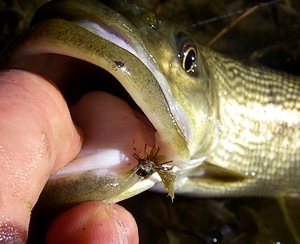 I’d been throwing an
I’d been throwing an 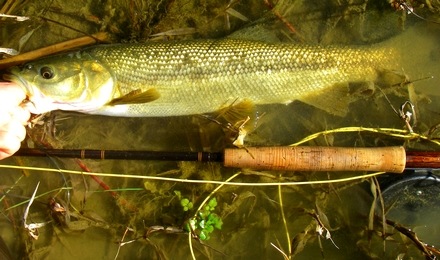
 For fly fishermen it’s the number we’ve always feared. We think about it with every trip but it’s strictly a “don’t ask, don’t tell” topic in the parking area.
For fly fishermen it’s the number we’ve always feared. We think about it with every trip but it’s strictly a “don’t ask, don’t tell” topic in the parking area.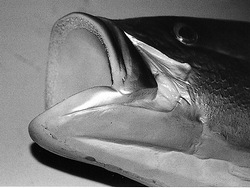 Art and the sporting fraternity have an uneasy relationship, usually predicated on a spur of the moment artistic bent, followed closely by the threat of divorce.
Art and the sporting fraternity have an uneasy relationship, usually predicated on a spur of the moment artistic bent, followed closely by the threat of divorce.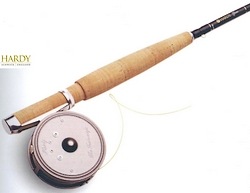 Not to be outdone by the Retro Movement, the venerable Hardy and Grey’s dips its toe in the fiberglass market along with Sage.
Not to be outdone by the Retro Movement, the venerable Hardy and Grey’s dips its toe in the fiberglass market along with Sage. The “system” word always scares hell out of me. I’ve always assumed it’s the rugged individualist that gets squeamish at the thought of tailoring his fishing to someone else’s system; it doesn’t mean it’s bad – we just know our opportunity for freestyle points evaporates.
The “system” word always scares hell out of me. I’ve always assumed it’s the rugged individualist that gets squeamish at the thought of tailoring his fishing to someone else’s system; it doesn’t mean it’s bad – we just know our opportunity for freestyle points evaporates.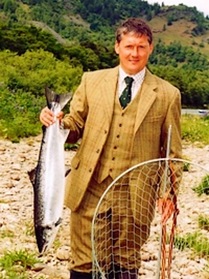 Professional has its moments, but if “Unwashed Bob,” who catches more fish than any human alive, is unbooked, wouldn’t he be equivalent to a smiling courteous staff?
Professional has its moments, but if “Unwashed Bob,” who catches more fish than any human alive, is unbooked, wouldn’t he be equivalent to a smiling courteous staff? I’m not sure that “the little Black dress” is just a girl’s best friend, it’s one of my favorites as well.
I’m not sure that “the little Black dress” is just a girl’s best friend, it’s one of my favorites as well.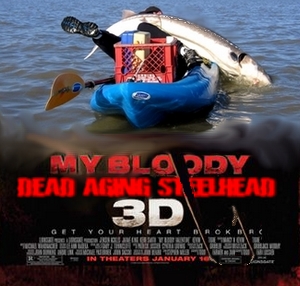 With Hollywood scheduling eight 3-D films this year, will the extremist angling film crowd be swayed by the flames and guts splashing over the audience – and play the same card with an angling feature?
With Hollywood scheduling eight 3-D films this year, will the extremist angling film crowd be swayed by the flames and guts splashing over the audience – and play the same card with an angling feature?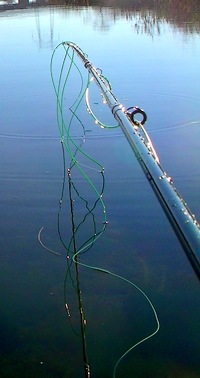 After a week of practice I’m the second kind of expert; I have a theory or opinion on absolutely everything, I’m quick to point out the trifling defects in everyone else’s casting, in both tackle and form, but don’t ask me to show you, ’cause I still can’t cast for beans..
After a week of practice I’m the second kind of expert; I have a theory or opinion on absolutely everything, I’m quick to point out the trifling defects in everyone else’s casting, in both tackle and form, but don’t ask me to show you, ’cause I still can’t cast for beans.. The wind started to pick up a bit, and I’m hearing the staccato reports of gunfire upstream – not duck hunters, someone’s unloading seven round clips of Eastern Bloc high powered stuff – which can go some distance.
The wind started to pick up a bit, and I’m hearing the staccato reports of gunfire upstream – not duck hunters, someone’s unloading seven round clips of Eastern Bloc high powered stuff – which can go some distance.